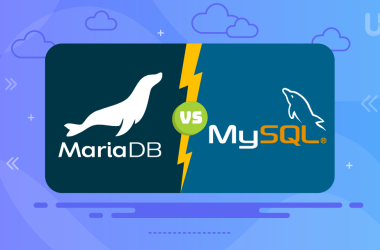Security of data is much more important than ever in this modern digital arena. The volume of sensitive information shared online continues to increase, and we must keep it safe from unauthorized access. In this case, encryption of data comes in as a very important guard in securing sensitive information during transmission and in storage.
In this blog post, we will discuss what data encryption is, its types, and the technologies involved in securing data. Understanding the importance of encryption allows individuals and organizations to better secure sensitive information from cyber threats, maintain privacy, and remain compliant with data protection regulations.
What Is Data Encryption?
Data encryption transforms readable data, known as plaintext, into a form that is difficult to read, called ciphertext, using algorithms and keys. Data encryption ensures that only authorized parties with proper keys can read the original information. Encryption primarily keeps sensitive data safe from unauthorized access, theft, or corruption, contributing to the core principles of information security.
It finds extensive applications in web-based applications, including online banking, e-mail communications, and cloud storage. The encryption of data ensures confidentiality and integrity at both personal and corporate levels against emerging cyber threats and ensures adherence to regulatory standards.
Types Of Data Encryption
In broad terms, data encryption can be divided into two main categories of encryption: symmetric and asymmetric. Both have different characteristics and fields of application. Being able to differentiate these will be important in choosing the right encryption method for particular needs. The following sections take a closer look at symmetric and asymmetric encryption, explaining how they work and for what purpose each is best suited.

Symmetric Encryption
Symmetric encryption uses the same key because it enables two procedures: encryption and decryption. In symmetric encryption, two entities communicate using a shared key, which must remain secret to ensure their security.
Common symmetric encryption algorithms include Advanced Encryption Standard AES and Data Encryption Standard-DES. Symmetric encryption is generally faster and less computationally intensive. However, it has some drawbacks related to key management. These drawbacks become particularly significant when a large number of users participate. If this secret key really stays secret, nobody else will have access to the message; any compromise in the secrecy leads to unauthorized access, which can even sometimes lead to a breach in data centers.
Asymmetric Encryption
Asymmetric encryption, also known as public-key cryptography, deals with a public/private key pair. The public key is used for encryption. The private key is used for decryption. A public key can be shared freely with no access control. Anyone can send messages to the keyholder. The private key, however, ensures confidentiality. Only its owner can decrypt messages.
Hence, this approach finds applications in secure communications, digital signature schemes, and SSL/TLS protocols. The most widely used asymmetric encryption algorithms include RSA and ECC, or Elliptic Curve Cryptography. When using asymmetric encryption, the security for key exchange is enhanced, but it is slower than symmetric encryption. As a result, asymmetric encryption is less suitable for handling large volumes of data.
Encryption Algorithms
- Advanced Encryption Standard (AES): Symmetric encryption algorithm, adopted worldwide. While offering three different key sizes-128, 192, or 256 bits-it offers strongly robust protection of data with high performance.
- RSA Algorithm: An asymmetric encryption method essential for secure data transmission, relying on the difficulty of factoring large prime numbers; vital for key exchange and digital signatures.
- Blowfish: a fast symmetric block cipher; it was designed to replace DES and can use a variable key length of up to 448 bits. One of the faster block ciphers, highly flexible for sensitive data security.
- Elliptic Curve Cryptography (ECC): An asymmetric encryption approach using elliptic curves, providing strong security with smaller keys enhancing efficiency in encryption operations and digital communications.
Protect Your Data With Reliable Cloudflare Hosting
Enhance your website’s security with UltaHost’s Cloudflare Hosting. Leveraging advanced encryption features, it ensures your data remains secure during transmission. A reliable hosting that prioritizes data encryption and protects against cyber threats!
Key Management
The general key management encompasses generating, distributing, storing, rotating, and destroying cryptographic keys. Proper Key Management ensures that the generation of encryption keys is done in a safe manner and follows its entire lifecycle in order to avoid unauthorized access by the wrong people and breaches in data.
Centralized key management systems may enable automated handling of these processes, including secure key storage, access controls, and auditing. This involves proper key management, including rotation of keys at regular periods, proper key generation techniques, and appropriate backup methodologies. A weak or ill-handled key gives an attacker an easy way into otherwise secure encryption algorithms in a DDoS-protected server. For this reason, key management must be paramount in ensuring data security.
Data Integrity
Data integrity in general, means the precision, consistency, and reliability of data from its creation until the end of its life. In this context, it means that storage, processing, or transmission does not corrupt or change the information. Most encryption algorithms have built-in mechanisms like checksums, cryptographic hashes, or even digital signatures for data integrity.
These methods thereby enable recipients of encrypted data to detect unauthorized modification, corruption, or tampering upon receipt. Data integrity ensures that tampering, fraud, and errors cannot occur and that the authenticity of the data held is valid. It is used to complement encryption by providing an added layer of security for sensitive data privacy from a range of threats and to assist organizations in complying with regulatory standards.
Encryption in Transit
In-transit encryption refers to the security of data across locations, such as over the Internet or private networks. This encryption maintains the confidentiality of the information and makes it unreadable, blocking interceptors from eavesdropping on it during transmission.
Protocols widely in use for encryption in transit are SSL and TLS for web traffic, secure shell access via Secure Shell (SSH), and VPN or VPS to extend a secure tunnel across open networks. Data encryption in transit protects data, such as personal information, financial transactions, and confidential correspondence, from unauthorized access by implementing encryption, ensuring the integrity of data during transmission.
Encryption at Rest
Encryption at rest encrypts data when it is stored on a device or hosting server. This differs from data-in-transit encryption, which applies to data transported across a network. Encryption at rest secures data against theft, breaches, or other unauthorized access methods while storing it. It could be applied using full-disk encryption, file-level encryption, and database encryption solutions.
This protects sensitive information such as personal information, financial records, and intellectual property by encrypting data at rest. Encrypting data at rest is crucial because it ensures compliance with regulations such as GDPR and HIPAA. In addition, at-rest encryption enhances the overall data protection strategy by adding an important layer of security when physical devices are lost or compromised.
Applications of Encryption
- Online Transaction Security: Encryption is necessary to secure financial transactions on the internet, so credit card details and personal information remain confidential during online shopping, banking, and e-commerce websites, among others.
- Protection of Communications Channels: Encryption works in protecting communications, such as emails and messaging applications, from unauthorized accesses and intercepts sensitive information that flows between individuals and organizations.
- Data Security in Cloud Storage: Encryption protects data stored on cloud services, maintaining data unreadable and out of reach, even when breaches may happen without the correct decryption key.
- Compliance with Regulatory Standards: The encryption technique helps an organization maintain the regulatory standards regarding data protection, such as GDPR and HIPAA. It assures security for sensitive data of their valuable customers and patients from unauthorized breaches and cyber threats.
Conclusion
Both data encryption at rest and in transit are the cornerstones of modern digital security, protecting sensitive information from unauthorized access. By understanding the various types of encryption, algorithms, and key management, individuals and organizations can make informed decisions to ensure adequate data protection. Transparent data encryption assures integrity and confidentiality in an increasingly connected world, whether at rest or in motion.
Enhance your website’s security with UltaHost’s SSL Certificates. SSL Certificates encrypt data in transit, ensuring secure communication between your site and visitors. Protect sensitive information and build trust—choose UltaHost for reliable SSL solutions tailored to your needs today.
FAQ
What is data encryption, and why is it critical?
Data encryption refers to the process of converting data in a readable format into a code, which prevents unauthorized access and makes the data secure and confidential.
What’s the difference between symmetric and asymmetric encryption?
Symmetric encryption uses one key for encryption and decryption, whereas asymmetric encryption uses a public-private key pair.
What are some common encryption algorithms?
The suite of common algorithms in this area includes, among others, AES, RSA, Blowfish, and ECC, all of which have different methods and strengths for securing data.
Why is key management so important in encryption?
Key management ensures careful consideration of major steps when securely handling encryption keys, as compromising a key can easily expose data.
What does encryption, both in transit and at rest, serve the purpose of?
Encryption in transit protects data during transmission, while encryption at rest prevents unauthorized access to stored data.
How can encryption ensure the integrity of data?
Encryption uses checksums or digital signatures to check unauthorized changes or data and ensure it is correct and unmodified.
What are typical practical applications of data encryption?
Applications include the protection of e-transactions, communication, cloud data security, and compliance issues.













